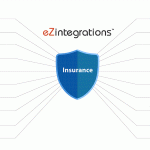In the ever-expanding realm of healthcare, the seamless exchange of patient information across various systems has become a paramount concern. The efficient integration of Electronic Health Records (EHRs) lies at the heart of ensuring this data connectivity. However, to realize this vision, healthcare providers must navigate the complex world of data standards. In particular, two standards have emerged as key players in the healthcare EHR data integration arena: HL7 (Health Level 7) and FHIR (Fast Healthcare Interoperability Resources).
The Imperative for EHR Integration:
EHR integration stands as a fundamental need in the modern healthcare landscape. It encompasses the process of combining multiple healthcare software systems, ensuring they can work in concert to provide a holistic view of patient data. This integration is vital for various aspects of healthcare, from improving patient care and reducing medical errors to streamlining administrative tasks and enhancing decision-making.
Understanding HL7 and FHIR:
HL7: Bridging the Data Gap:
Health Level 7, often abbreviated as HL7, is a set of international standards for the exchange, integration, sharing, and retrieval of electronic health information. It has been at the forefront of healthcare data interoperability for over three decades. HL7’s standards facilitate the seamless transfer of clinical and administrative data between software applications, including EHR systems, thereby ensuring a unified and standardized approach to data communication.
Real-World Example: Consider a patient who visits a primary care physician and later needs a specialist’s care. The primary care physician’s EHR system, operating on HL7 standards, can effortlessly transmit the patient’s records, including medical history, test results, and treatment plans, to the specialist’s EHR system. This secure data sharing enables the specialist to provide well-informed care.
FHIR: A Modern Approach:
Fast Healthcare Interoperability Resources (FHIR) is a more recent standard that has garnered significant attention in the healthcare industry. FHIR is designed for the web and adopts a more flexible and modern approach to data exchange. It offers a RESTful API, making it accessible via standard HTTP web requests. FHIR aims to accelerate the exchange of healthcare information by providing a straightforward and developer-friendly framework.
Real-World Example: An EHR system built on FHIR standards can easily integrate with third-party applications. For example, a patient’s EHR data can be shared with a health and wellness app via FHIR APIs. This enables patients to actively manage their health by accessing their EHR data through user-friendly applications.
The Significance of Data Standards:
In the world of EHR integration, data standards play a pivotal role. They serve as a common language that allows various healthcare systems to communicate effectively. By adhering to data standards like HL7 and FHIR, healthcare providers can achieve the following:
1) Data Consistency: Standards ensure that data is consistently formatted and structured, making it easier to understand and share. This consistency is invaluable when exchanging patient records among different healthcare providers and institutions.
2) Data Quality: Standardized data promotes data quality and accuracy. Patients’ health records are more reliable and less prone to errors when data standards are in place.
3) Interoperability: Data standards are the linchpin of interoperability. Systems that speak the same “language” can exchange data without unnecessary roadblocks or complicated translations.
4) Efficiency: With data standards, the integration process is streamlined, reducing the time and resources required to establish EHR connectivity.
5) Innovation: By adhering to modern standards like FHIR, healthcare providers can unlock the potential for innovation. Developers can create cutting-edge applications and tools that can seamlessly integrate with EHR systems.
eZintegrations: A Solution for Unified EHR Integration:
eZintegrations, a pioneering EHR integration platform, understands the importance of data standards in the healthcare ecosystem. It offers seamless integration with EHR systems based on HL7, FHIR, and other relevant standards.
With eZintegrations, healthcare providers can harness the power of these standards to create unified EHR systems. The platform simplifies data transport and transformation, allowing healthcare professionals to manage data without extensive coding or technical expertise. Whether it’s data transformation, data wrangling, or data orchestration, eZintegrations empowers healthcare providers to achieve seamless EHR integration.
The Path Forward:
The future of EHR integration is intertwined with data standards like HL7 and FHIR. As these standards continue to evolve, healthcare providers must stay at the forefront of this transformation. By adopting solutions like eZintegrations, they can effectively navigate the intricacies of data standards and harness their full potential to provide top-notch patient care and unlock new possibilities in the world of healthcare.
Integrating Healthcare Data: Challenges and Solutions
One of the foremost challenges of EHR integration is the varying degrees of data complexity that healthcare providers must manage. Patient data can be stored in multiple formats, making it crucial for EHR systems to not only store this data but also interpret and exchange it effectively. This challenge can lead to data inconsistencies, potentially affecting patient care.
To address this issue, EHR systems leveraging standards like HL7 and FHIR ensure that the data they store and exchange is well-defined and follows a common structure. By adhering to these standards, healthcare providers can streamline data communication and ensure that patient records are consistent and easily interpreted across systems.
Another challenge arises in the form of interoperability. Healthcare systems and applications need to work together seamlessly, especially when it comes to sharing patient data. This challenge is addressed by data standards that enable systems to communicate without the need for extensive custom development work.
The Significance of Data Quality and Security
Data quality and security are paramount in healthcare, where the stakes are incredibly high. Poor data quality can lead to misdiagnoses, incorrect treatment plans, and potentially life-threatening errors. Moreover, the sensitive nature of healthcare data necessitates stringent security measures to protect patient privacy.
HL7 and FHIR standards enforce data quality by providing a structured framework for data representation. Data elements, such as patient names, medication information, and lab results, are standardized, making it less likely for errors to occur during data exchange.
The standards also address security by implementing measures to ensure that patient data remains confidential and tamper-proof. This is especially crucial






